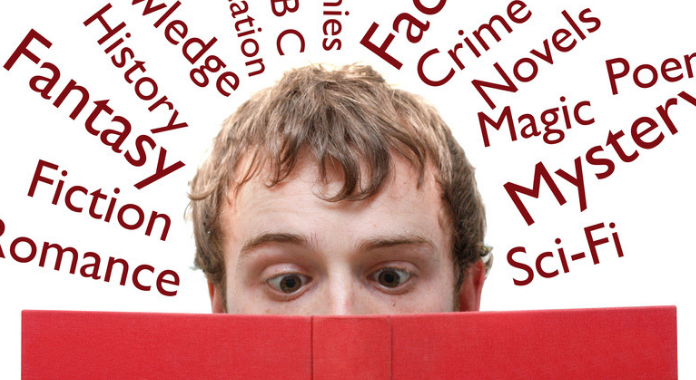Copyright 2018 by Gary L. Pullman
Written horror fiction is
a dying breed. There are plenty of reasons for this state of affairs.
Anyone and everyone can write and deliver-on-demand a printed or electronic
version of as many horror novels as he or she wants, selling them through
Amazon, Google, Barnes & Noble online, or some other website.
Talent doesn't much
matter, nor does familiarity with the history of the genre, nor does
respect for the genre or its readers. Just put it out there, and
nobody will buy it. (Sales are spectacularly dismal for any but
established writers, and sales are dismal enough for 99 percent of
them). However, the sheer
volume of “novels” now available in cyberspace clogs publishing
arteries, offering so many choices that readers are apt to make none
at all, unless its a novel by somebody like Stephen King, whose best
work seems to be far behind him.
We prefer movies to books, because we're more visually than cognitively
oriented, preferring images to words. Besides, we don't have to use
our imaginations or think much when we watch a movie: the writer,
director, actors, special effects team, and others have done most of the
work for us. Watching a movie, as opposed to reading a book, is
almost pure entertainment and unadulterated pleasure. Reading, by
comparison, seems a laborious, often unrewarding, burden.
Novelists
have tried to emulate screenwriters, writing tighter scenes,
eschewing exposition and long-winded dialogue, foregoing interior
monologues and stream-of-consciousness, restricting themselves, more
and more, to the limited third-person point of view, avoiding
“head-hopping,” and making something happen every other page or
so. They strive to show, avoid telling, and still—readership
declines and declines. Some statistics have suggested even moviegoing
isn't as popular as it once was, although it's way more popular than
reading. Times change, and written horror, the horror of the pages,
as opposed to the soundstages, is a casualty of these changing times.
I'm
not blaming technology. Times, as I said, change. Those who don't
change with them—well, we know what happens to organisms that fail
to evolve. Emulating the techniques of the screen isn't enough.
Novels—and novelists—are on their way out. (That's why Borders
went bankrupt and Barnes & Noble may be next.) No, they won't be
gone overnight. (The dodo was last seen alive in 1662.). But novels
and novelists, it seems, are doomed.
Their day has come and is just about gone.

Like
most people, I'm a movie fan, although I find I watch fewer and fewer
each year, and I watch the few I do watch on Netflix, Amazon Prime,
or Hulu. I prefer to see them streaming into my living room, on my
big-screen TV, than to go to all the trouble and bother of leaving
home, driving to a theater, waiting in line (or buying online so I
don't have to wait in line), finding a seat (usually, an
uncomfortable one with limited space for my arms and legs), being
interrupted by late arrivals and talkative neighbors, and being
blasted by sound that's much louder than necessary, even for me (and
I'm hearing impaired). If I want to buy snacks or visit the restroom,
my moviegoing experience is much worse. Then, at the end of the
movie, I have to file out of the theater, find my car, and drive
home, through the fairly heavy traffic of Las Vegas. (And, oh, yes,
pay about $10 for the ticket, not to mention the round-trip cost
of gasoline and the snacks, if any, I buy.) No, thanks, I'd sooner stay
at home and watch a movie from the comfort and convenience of my
living room couch.
I'm
suggesting that movie theaters may be on their way out. The
future of fiction (i. e., movies), it seems, is streaming—but it isn't.
What
is the future of
fiction? Who knows? Nobody has a crystal ball, including the few who
have crystal balls. Maybe movies will happen inside the theaters of
our skulls, as sounds and images are uploaded to our brains, either
by wire or through wireless technology (I prefer the
latter—I think).
Instead
of dreaming at night, we'll watch the streaming movies of our
choice. For those who enjoy nightmares, horror movies will likely be
available. During the day, we might be immersed in 3-D holographs.
(Princess Leia was ahead of her time.) Instead of a movie's coming
soon to a theater near you, it will be coming at once, all around, or
inside, you.
Maybe
on our way to or from work, if we're still working outside our
homes—or working at all—we'll be able to upload a movie trailer
or two. A few forward thinkers also suggest our fiction may be
written by robotic devices using linguistic-mathematical logarithms,
virtual reality (VR), and artificial intelligence (AI). (The “fake
news” of our own day suggests that “non-fiction” may be produced and
delivered in much the same way.)
Once
the few remaining, die-hard horror novelists, the Stephen Kings, the
Peter Straubs, the Bentley Littles, and the Whoever-Elses, expire,
the horror genre, as far as the novel is concerned, at least, is
likely to become extinct. Movies will probably continue to be made, promoted,
released, watched, and critiqued until something more evolved comes
along. Then, they, too, will go the way of all celluloid.
The process is already in progress. This trailer
from 20th Century Fox (courtesy of IBM's AI program, Watson) is about a
superhuman AI. To create the trailer, Watson analyzed “100 horror
movie trailers, studying each scene and looking for common ground,”
before selecting 10 of them from the 90-minute movie Morgan
that Fox had produced. The whole process took Watson a mere 24 hours. Humans take as long as a
month to make a trailer. Watson cheated, though: a film editor had to piece “together the scenes,”
because the AI program lacks the ability to “understand and
calibrate . . . emotions,” Morgan's
director, Luke Scott said.
Jim
Smith, a fellow with Machine Vision—IBM Research, said a lot must
happen before Watson or any other AI program could develop an entire
movie, if such a program is ever able to accomplish such a feat at
all. It's unlikely AI will “be able to create art,” Smith
believes, because it is incapable of the “original thought . . . essential in creativity.”
Yes,
all this may (or may not) happen, but, in the meantime, as comic
book writers are fond of writing, what, if anything, can be done
about the current, stagnant state of horror novels?
We
need a revolution of sorts, and that's the problem. Historically,
revolutions in art start as reactions against the art of the status
quo. In
painting, impressionism
started as a reaction against traditional artistic conventions. Other
times, innovations occur within a revolutionary cycle itself, as when
Vincent van Gogh “carried Impressionism to its limits by using
expressive colors [and] Fauvism went one step further in using
simplified designs in combination with an 'orgy of pure
colors.'” Likewise, Expressionism can be considered “a German
modern art version of Fauvism.”
New
forms of painting also originated as reactions against commercial
transitions, such as that which occurred when an industrial economy began to
replace the earlier agrarian economy: “Art historians tend to
interpret this new movement [art
nouveau] as a natural reaction to the Industrial Revolution.”
In turn, the Industrial Revolution might also have affected art
nouveau, as Art
Deco, which followed art nouveau, represented a “simplified”
movement that was “closer to mass production.”
Surrealism
turned inward, seeking to emphasize the importance of the unconscious
mind. It wasn't restricted only to painting, however; it also
influenced literature and film.
A
reaction against abstract art, popular
art, or pop
art, sought “to bring art back into the daily life of people” and
took, as its subject matter, “objects from everyday life.”
Literature
has long allied itself with painting, as it has with the other arts.
It has also long been allied with theology, philosophy, history,
geography, psychology, sociology, and, more recently, with the
sciences. In fact, one of the great strengths of literature—perhaps
its greatest—is that it unites human experience, bringing together
a wide variety of interests that, although seemingly unrelated, have
a common source in humanity itself, in individuals, society, and
culture. In fiction, human beings truly are “the measure of all
things.”
Too
often, writers are caught up in the moment, not only representatives,
but also prisoners, of their own times. It is by venturing out of
one's habitat, by setting forth to explore new lands, that creativity
is excited and originality is awakened. By writing the same thing
over and over that has proved to have a market, writers (and
publishers)—and, yes, readers as well—sell and buy the same sort
of fiction over and over again. Why take a chance on writing
something new, on publishing something different, of buying an
unknown quantity, when we already know another Stephen King novel, no
matter how familiar the characters, setting, plot, and theme, will be
a New York Times
bestseller. We get the type of horror fiction we want and, some might
suggest, deserve.
Until
AI can write movie scripts for us to play inside our heads or
surround us on every side, if we want something different, readers are going to have to demand it, writers write it, and
publishers publish it. Maybe the history of recent art movements among
painters can suggest some ways writers can write some new forms of fiction,
horror and otherwise. Our world suggests, more than ever, perhaps,
many things to which horror novelists (and moviemakers, for that
matter) could react, if they've a mind to do so.
Otherwise,
look for yet another "blockbuster" by Stephen King, Peter Straub, Bentley Little, or
Whoever-Else; it's probably being written, published, or distributed
this very moment.
































